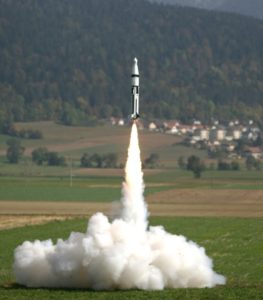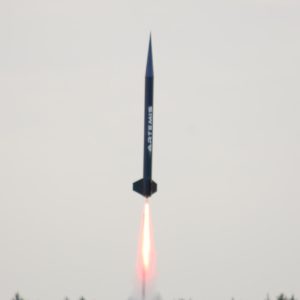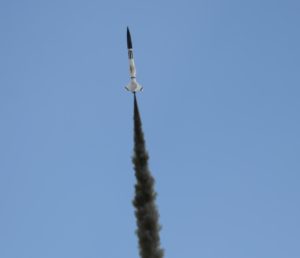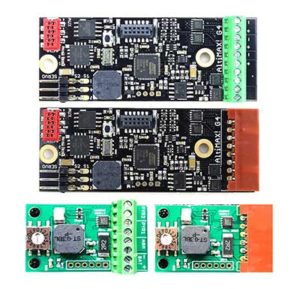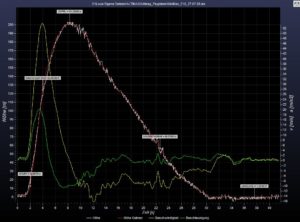Function:
The Altimax altimeters are installed in the rocket and measure the position of the rocket with the help of pressure acceleration. In addition to the altitude, the velocity is also calculated, 200x per second. This data is fed into a Kalman filter, which uses all the values together to calculate the position of the rocket. The controller of the Altimax constantly evaluates this attitude and reacts to changes. Since the Kalman filter calculates the position based on the last data, it can react very precisely to changes, e.g. the peak of the rocket is hit very accurately.
Depending on the state and setting, the altimeter can then activate existing outputs, e.g. ignite a fuze at the apogee, which in turn ignites the ejection charge for a parachute. Servos can also be activated. It is also possible, for example, to ignite a second stage after a main motor has burned out. In total, 15 events can be connected to 11 actions on the Altimax G4. Thus, almost everything is possible that can be imagined with an altimeter. Timers can be started, outputs can be activated or servos can be moved.
All functions are adjustable by PC, with our free Windows software, or also by LCD terminal, the terminal is a small device that is simply plugged in and allows all settings without PC. It can also display altitudes.
2-stage recoveries are very easy to realize, a small parachute is ejected at the apogee, then after descending to a certain altitude the actual main parachute is ejected, thus the rocket drifts much less.
The software in the altimeter also monitors the flight attitude and ignites the parachutes if a crash is imminent, so horizontal flights, for example, are stopped reliably and quickly. The larger models also record the measured values, the data can then be read out and evaluated on the PC. In addition to the sensor data, all voltages of the battery and at the igniters are also recorded.

